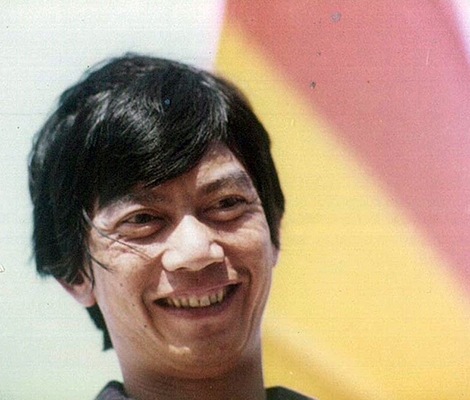INTERVIEW WITH VORAPANT CHOTIKAPANICH - FROM A BANGKOK GARAGE TO A WORLD CLASS SUPER-SITE
19th April 2021
Company founder and chairman Vorapant Chotikapanich reflects on some key moments in COBRA’s unstoppable rise.
Where did it all start?
COBRA was initially known as Windglider Thailand, the company I founded in March 1978. Back then I had been working for my family’s company distributing products such as sulphuric acid and other chemicals for industrial applications, but I always had an ambition to start my own business. I met my initial partners Bert and Karl Morsbach on the beach at Pattaya. We all enjoyed the beach and watersports and talked of going into business together. Things developed from there and windsurf boards were a natural choice, given our combined skills and interest in the sport, one which was growing considerably at that time. I started building boards in the garage under my house in Bangkok.
What was the first product?
We began by producing the Windglider designed by Fred Osterman – one of the earliest production windsurf boards. Originally these boards were hollow fiberglass constructions but we spent a lot of time working on alternatives, taking inspiration from other products such as recreational gliders, to develop our special foam-cored sandwich construction.
“Considering our passion for windsurfing, windsurf boards were a natural starting point for us… above all and to this day, we remain true to this passion”
Windglider became Cobra International in 1985. How did the name come about?
Our neighbours christened the business! At that time our factory was based on a site with a lot of wetlands and swamp areas and these were well known cobra habitats. So that’s how everyone referred to the factory and this inspired the names of the King Cobra and Cobra Pinta boards. Later, we decided to change the name of the company in line with these successful boards.
“I believe the sandwich-construction windsurf boards we developed from these initial designs made an important contribution to the sport of windsurfing, making it more exciting and more accessible to enthusiasts at all levels.”
What are you most proud of in the history of COBRA?
I’m very proud that we have been able to make a very positive contribution to the growth of watersports and most proud of the facility that we have developed here at the Amata Nakorn Industrial Estate – especially when you consider that in the early days we were using garage space under houses. Among other things, this often caused issues with our neighbours because of the fumes from the fiberglass work, so it wasn’t ideal, but sustainability wasn’t on the agenda back then. Eventually we moved to larger premises, but as demand grew and more projects were secured we had to keep renting new spaces and it became very hard to manage all the separate sites.
When we moved to our present location we established a permanent base and the space to grow and really develop the business. I’m especially proud of the Amata Nakorn plant – it’s a truly world-class composite production centre in every way, with a wide range of proprietary technologies and a team of very skilled craftsmen.
And what has been the biggest challenge for the company?
It was definitely managing the period from 1985 to around 1988. This was a very tough time for everyone at COBRA. It was at this time that the German distribution company we were dealing with and sold through went under. We lost a lot of stock that we didn’t get paid for. I had to meet weekly with the banks who supported us, and without them and the support from our resin supplier, Martin Scheufler, we would not have survived. It was hard but we took all the projects we could and our staff stayed with us and thankfully we got through it.
Was it a difficult decision to switch the bulk of COBRA production to OEM manufacture for third party brands?
Not really. Of course, I liked the fact that we manufactured the whole package and had success with our own-brand boards like the King Cobra, but ultimately I could see that the key to our expansion was in focusing on our production technology and offering it to others.
Did you ever consider expanding outside Thailand?
No, for me it was always definitely about production in Thailand. We have the facilities, the expertise and the resources here to produce high quality parts – and we deliberately chose not to try to do this overseas too.
“I’m especially proud of today’s plant - it’s a truly world-class composite production centre in every way.”






